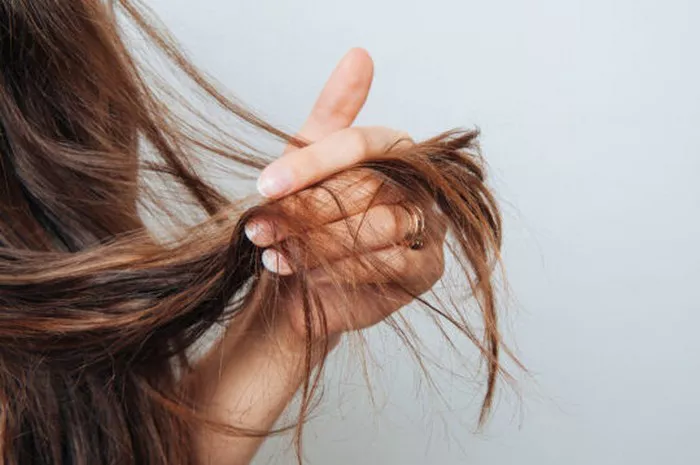Heat styling tools like flat irons, curling wands, and blow dryers are popular for creating sleek, voluminous, or curly hairstyles. However, frequent or improper use of these tools can lead to heat damage, leaving hair dry, brittle, frizzy, or even broken. If your hair feels rough, looks dull, or snaps easily, you might be dealing with heat damage. Don’t panic—this guide will walk you through simple, effective steps to repair and restore your hair’s health.
Understand What Heat Damage Is
Heat damage occurs when high temperatures break down the hair’s natural protein structure (keratin). This weakens the hair cuticle (the outer protective layer), making it prone to moisture loss, split ends, and breakage. The damage is often cumulative, meaning it builds up over time with repeated heat exposure.
Signs of Heat Damage:
- Dry, straw-like texture.
- Excessive frizz, especially in humid weather.
- Loss of curl pattern (if you have naturally curly hair).
- Split ends or broken strands.
- Dullness and lack of shine.
- Hair that tangles easily.
Stop Using Heat Styling Tools Immediately
The first step to healing heat-damaged hair is to give your hair a break from heat. Continuing to use hot tools will worsen the damage. If you must style your hair, opt for heat-free methods like:
- Braids or twists for waves.
- Flexi rods or foam rollers for curls.
- Blow-drying on cool air mode (if your dryer has one).
Trim Damaged Ends
Split ends and broken strands cannot be repaired—they must be cut. Trimming removes the weakest parts of your hair, preventing further splitting up the shaft.
How much to trim? Start with a small trim (¼ inch) every 6–8 weeks. If damage is severe, you may need to cut off more.
DIY vs. salon: Visit a stylist for precision, especially if you have uneven damage.
Focus on Hydration with Deep Conditioning
Heat-damaged hair loses moisture quickly. Restore hydration with deep conditioning treatments.
How to Use Deep Conditioners:
Choose a rich, creamy formula with ingredients like shea butter, coconut oil, or hyaluronic acid.
- Apply to damp hair, focusing on mid-lengths and ends.
- Cover hair with a shower cap or plastic wrap to trap heat.
- Leave on for 20–30 minutes (or overnight for intense repair).
- Rinse with cool water to seal the cuticle.
Frequency: 1–2 times weekly.
Rebuild Strength with Protein Treatments
Protein treatments fill in gaps in the hair’s structure caused by heat damage. Look for products with keratin, collagen, or amino acids.
DIY Protein Treatment Recipe:
- 1 egg
- 2 tbsp plain yogurt
- 1 tbsp honey
Mix, apply to hair, leave for 20 minutes, then rinse with cool water.
Caution: Overusing protein can make hair stiff. Balance protein treatments with moisturizing routines.
Use Leave-In Conditioners and Heat Protectants
- Leave-in conditioners provide all-day moisture. Spray or apply a lightweight formula to damp hair after washing.
- Heat protectants are non-negotiable if you return to heat styling. They create a barrier between your hair and hot tools. Choose a spray or serum with silicones (like dimethicone) for extra smoothing.
Wash Hair Gently
Harsh washing can strip natural oils and worsen damage.
- Use sulfate-free shampoos to avoid drying out hair.
- Wash less frequently (2–3 times weekly).
- Massage the scalp gently with fingertips, not nails.
Seal Moisture with Natural Oils
Natural oils lock in moisture and add shine. Apply a few drops to damp or dry hair:
- Coconut oil: Penetrates the hair shaft.
- Argan oil: Lightweight and rich in vitamin E.
- Jojoba oil: Mimics the scalp’s natural sebum.
Avoid Chemical Treatments
Bleaching, coloring, or perming damaged hair will cause further breakage. Wait until your hair regains strength before chemical processing.
Protect Hair While Sleeping
Cotton pillowcases create friction, leading to frizz and breakage. Switch to a satin or silk pillowcase, or wrap hair in a satin scarf.
Eat a Hair-Healthy Diet
Healthy hair starts from within. Focus on:
- Protein: Eggs, fish, beans.
- Omega-3s: Walnuts, salmon.
- Vitamins A and E: Spinach, avocados.
- Biotin: Nuts, whole grains.
Try Hot Oil Treatments
Warm oil treatments penetrate deeply to repair and soften hair.
Steps:
- Warm 3–4 tbsp of coconut or olive oil (not hot).
- Apply to scalp and hair.
- Cover with a shower cap for 30 minutes.
- Shampoo and condition as usual.
Limit Tight Hairstyles
Ponytails, buns, or braids that pull on hair can cause breakage, especially in damaged areas. Opt for loose styles or claw clips.
Monitor Progress and Adjust
Recovery takes time. Take monthly photos to track improvements in texture, shine, and length retention. If progress stalls, consult a stylist for personalized advice.
When to See a Professional
If home care isn’t helping, a stylist can recommend salon treatments like:
- Keratin treatments to smooth and strengthen.
- Olaplex to repair broken bonds.
- Customized haircuts to reshape damaged hair.
Final Tips for Prevention
- Always use heat tools on the lowest effective temperature.
- Never apply hot tools to soaking-wet hair.
- Invest in quality tools with adjustable heat settings.
Conclusion
Heat damage from styling tools is common, but hair can be restored. First, recognize damage signs. Then, stop using heat styling, trim damaged ends, and focus on hydration with deep conditioners and protein treatments. Use leave – in conditioners, heat protectants, and wash hair gently. Seal moisture with natural oils, avoid chemical treatments, and protect hair while sleeping. Maintain a hair – healthy diet. Monitor progress, and consult a stylist if needed. To prevent damage, use heat tools at low temperatures and invest in quality ones.
Related topics:
How Long to Repair Heat Damaged Hair?
Heat Damaged Hair: Causes and Treatment
Best Way to Treat Heat Damaged Hair


